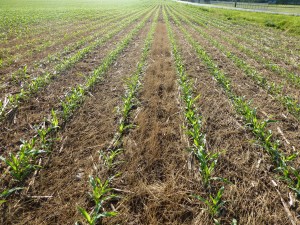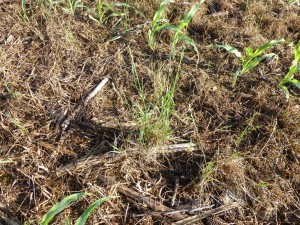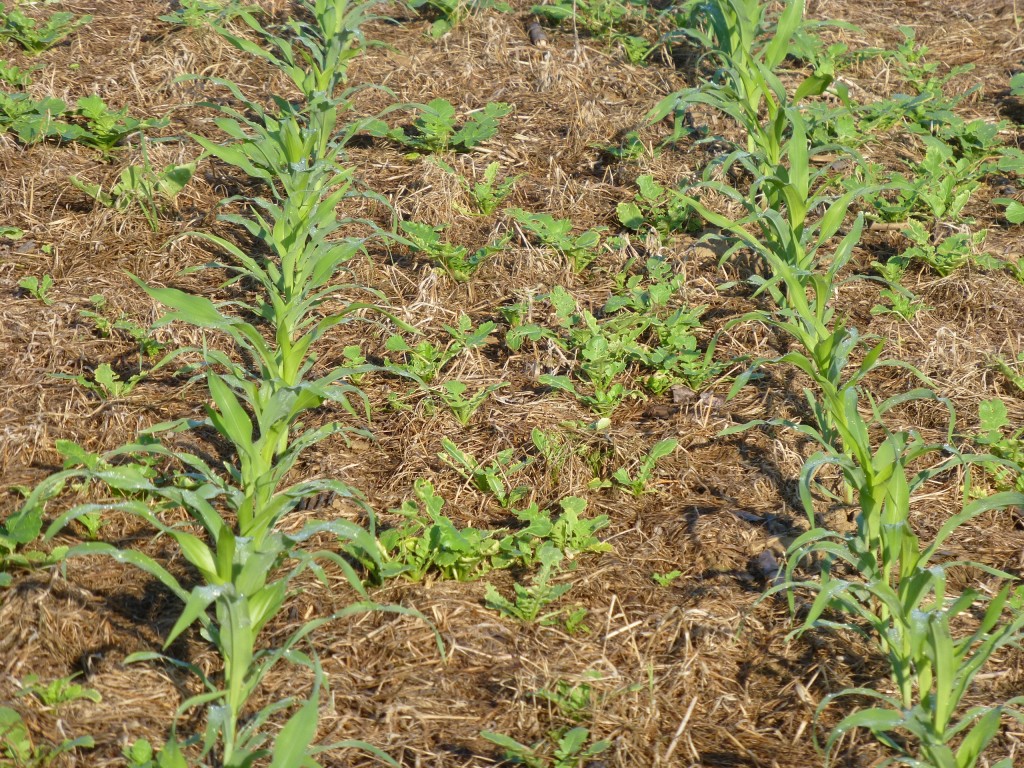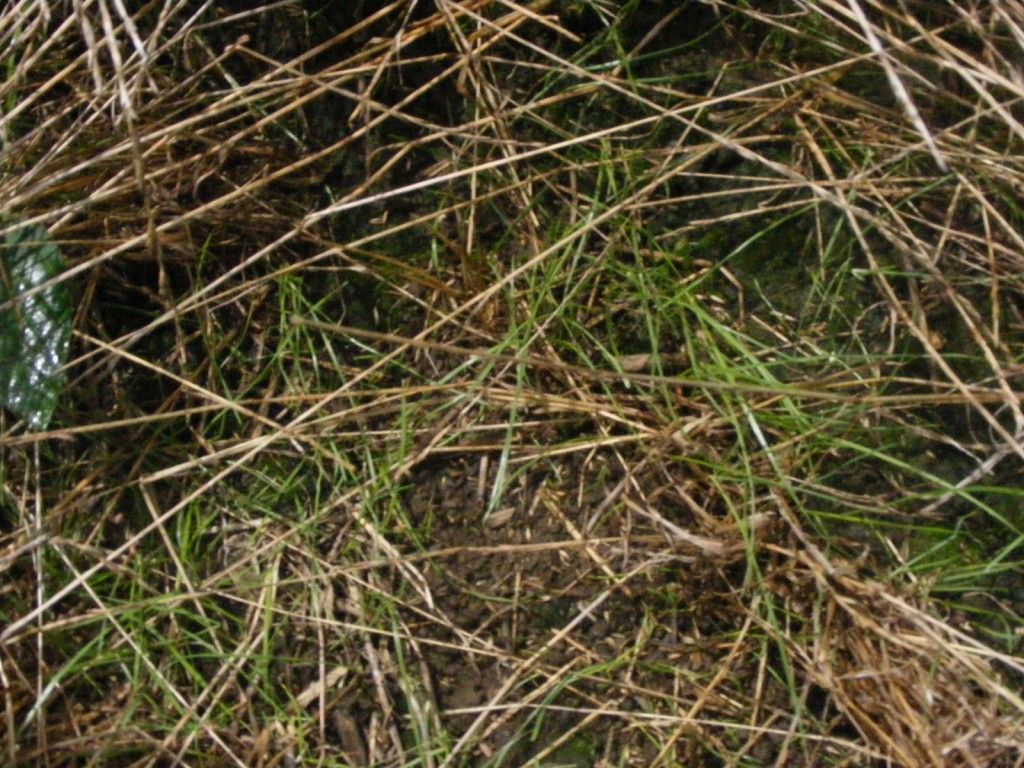Terminating cover crops is part of the “stepped-up management” that using cover crops requires. Over the past month I shot videos about killing annual ryegrass, killing crimson clover, and about the difference of killing cereal rye and annual ryegrass. In each of the videos I examined the importance of killing the cover crop…and killing it dead. Overall, most of the cover crop fields that I have seen had a very good burn down. In more than a couple of instances it was obvious that the applicator missed a few (if not many) spots or strips.
Terminating Cover Crop Radishes
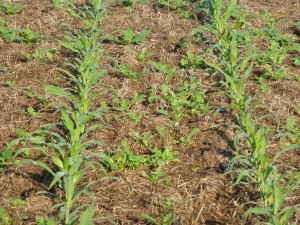
But burndown is not all that we need to be concerned about. In 2011 I saw photos from fields in Michigan that almost made my heart stop!
A corn field in southern Michigan had radishes that were taller than the knee high corn. And a field of soybeans had large radishes in it at harvest time. Thankfully the corn field yield was not affected, but areas of the soybean field could not be be harvested. At $12-13/bu soybeans that was an expensive lesson.
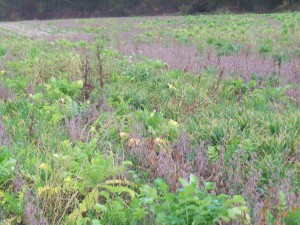
So how did these situations happen? In both instances the producers used glyphosate for their burndown and did not use (or had not yet used) residual herbicide. Of course the radishes were not the only “weed” in the field, but it was the focus of the growers!
Terminating Cover Crops at Robison Farms
At Robison Farms in Central Indiana we have two issues going on in our fields this spring of 2012:
#1) Radishes are coming in the corn and soybeans, even though we did apply a residual herbicide!
#2) There are more annual ryegrass escapes than I’d ever like to see. We actually had very good burndown and we used residual herbicide too. Note that these are NOT the only “weeds” that we have growing in the fields. I cannot remember a year when we’ve seen so many winter annuals and broadleaf weeds survive residual herbicide.
My brother Don has been scouting our fields and he reports seeing ragweed, morning glory, cocklebur, Queen Anne’s lace, and a variety of other broadleaf weeds across our 300 plus acres. The weeds aren’t thick, but there are too many of them. So we’ve concluded that it is not “just the cover crops” that are escaping.
So what is the advice here? Make a commitment to scout your fields for weeds, whether they be “cover crop species escapes” or other weed pressure.
- Excellent weed control is vital for top profits in cash crops.
- Use residual herbicide in corn and soybean fields.
- Scout fields looking for escapes and other weed issues.
- Terminate all escapes before they produce viable seed.
- Realize that cover crop radishes do have hard seed and you most certainly will see radishes in the spring.
- Oilseed crops (brassicas like radishes, turnips, rape, canola, kale, mustards) can stay viable in the soil for years. Scout each year in fields where you have had these brassicas.
- Scout for brassicas later in the season as well. This should not be an issue but don’t take a risk of losing acres of soybeans. The soybean field in Michigan had no residual herbicide applied but the radishes that caused the problems came up later in the season (probably late July or early August gauging from their size at harvest).
- In some years like 2012 (even if you did not use cover crops), you will have more weed pressure than other years. Eliminating all weed pressure is important!
